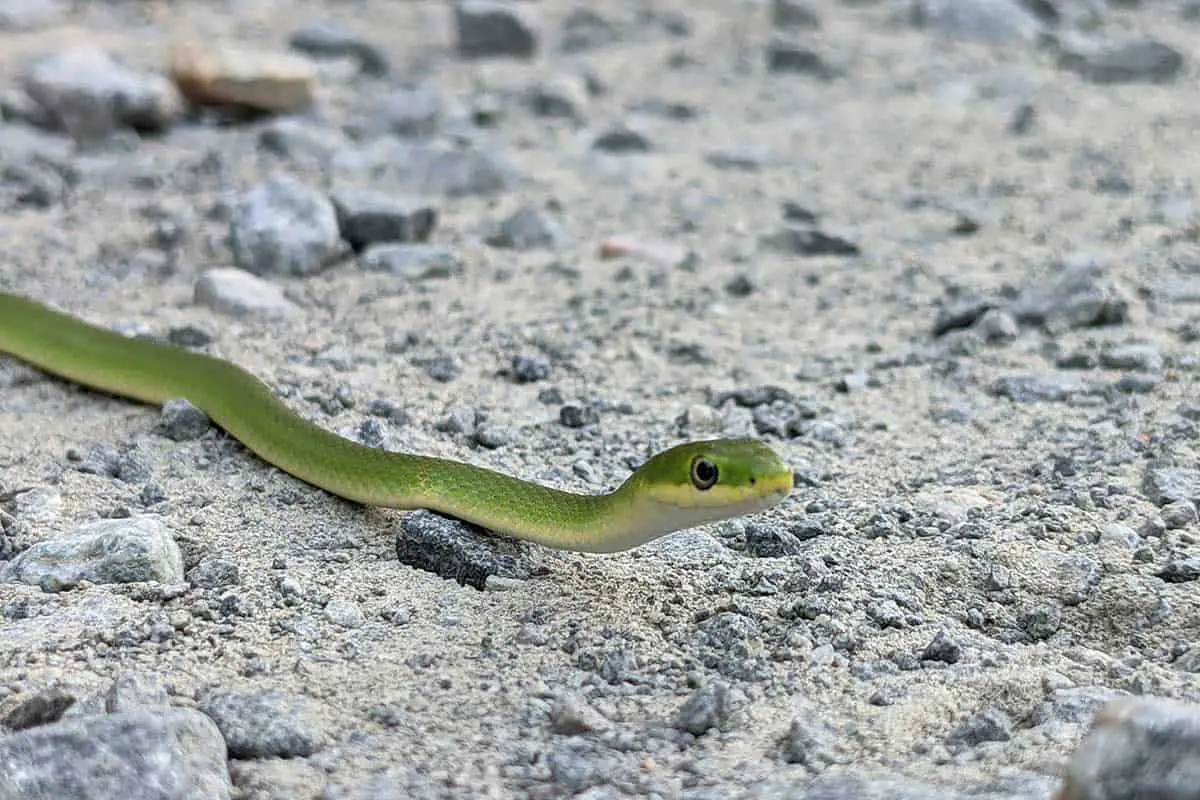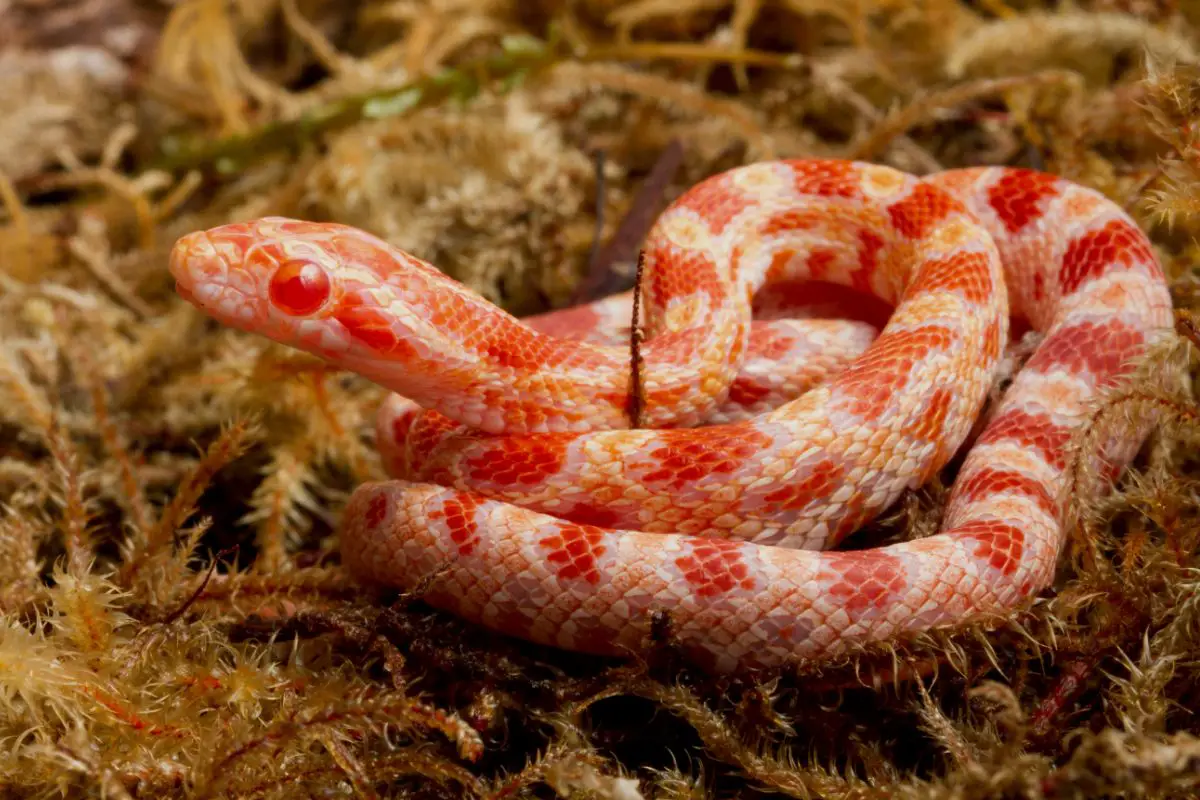Have you ever seen a green snake? In North Carolina, these snakes are a common sight. If you’re lucky, you may even see one in your backyard! They get their name from the greenish color of their skin and are found in a variety of habitats, including forests and wetlands.
For many people, the sight of a snake is enough to send them into a panic. But not all snakes are created equal. Many types of green snakes, like the one native to North Carolina, are actually beneficial to have around.
These gentle and harmless creatures are native to North Carolina and play an essential role in the ecosystem by preying on insects and small animals such as lizards, frogs, and rodents. Unfortunately, they are often mistaken for poisonous snakes and killed needlessly. So next time you see a green snake, take a moment to appreciate its place in nature and admire it from a safe distance!
Green Snakes in North Carolina
1. Rough Green Snake
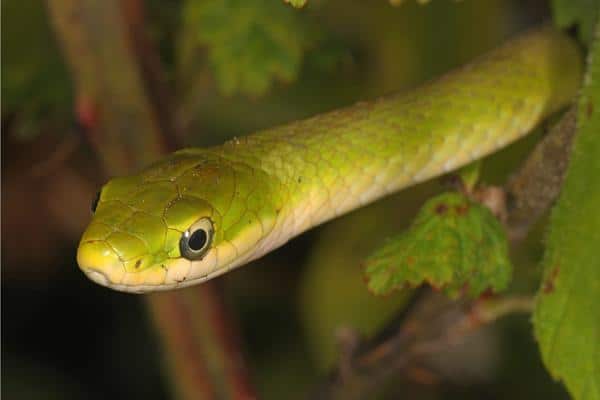
Scientific name: Opheodrys aestivus.
The rough green snake is a common sight in North Carolina. These slender snakes are typically between two and four feet in length, with adults averaging around three feet. They get their name from the keeled scales on their bodies, which give them a “rougher” appearance than other green snakes.
These shy creatures are most active during the day and are often seen basking in the sun on tree branches or tall grass. They are excellent swimmers and climbers and can even be found in trees! Their diet consists mainly of insects, but they will also eat small reptiles and amphibians such as lizards, frogs, and salamanders.
If you see a green snake in North Carolina, chances are it’s a rough green snake. These harmless creatures are an essential part of the ecosystem and should be respected as such. So next time you see one, take a moment to appreciate it from a safe distance!
2. Smooth Green Snake
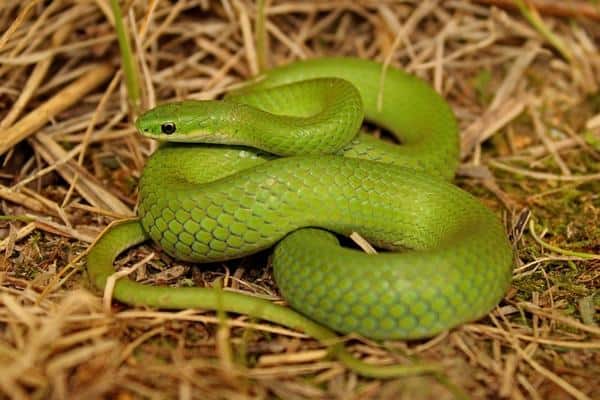
Scientific Name: Opheodrys vernalis.
The smooth green snake is a common sight in North Carolina. Smooth green snakes are slender, medium-sized reptiles found throughout the eastern United States and Canada. These slender snakes get their name from the lack of keeled scales on their bodies, which gives them a “smoother” appearance than other green snakes.
Smooth green snakes are shy creatures that typically measure between 2 and 3 feet in length, and their soft, green scales give them excellent camouflage in their forest habitat. When threatened, smooth green snakes often try to escape rather than fight back.
If captured, they may emit a foul-smelling musk or play dead. Smooth green snakes are generally harmless to humans, and they help to control populations of rodents and insects by preying on them. These snakes typically hunt at night and often coil up in leafy trees during the day to stay hidden from predators.
Additionally, green snakes are known to be excellent swimmers, and they often enter water bodies in search of prey or to escape from predators. You can also find them in moist areas near lake edges, meadows, pastures, prairies, and marshes. Smooth green snakes are non-venomous, and they kill their prey by constriction.
3. Speckled Racer Snake
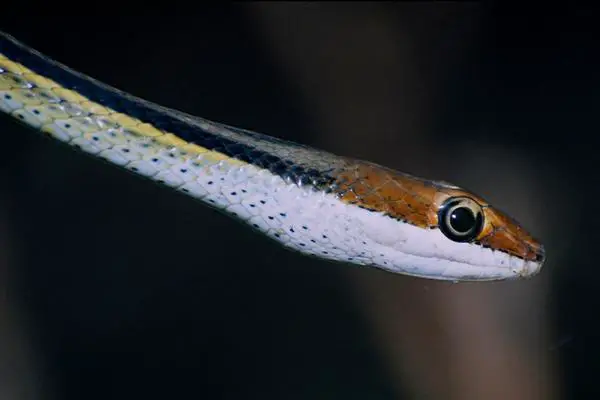
Scientific Name: Drymobius margaritiferus.
The Speckled Racer Snake is a non-venomous colubrid snake native to the Americas and a common sight in North Carolina. It is a small to the medium-sized snake, typically measuring between 2 and 4 feet in length.
The racer snake is dark brown to black, with beautiful blue and yellow spotting all around its body, giving it a magnificent greenish appearance. Its belly is often green or yellow. Its scientific name, margaritiferous, is a Latin word meaning “pearl-bearing.” It refers to the reptile’s pearl-like spots on its dorsal scales.
It’s commonly found in open fields and woodlands, where it preys on rodents and other small animals. When threatened, the snake will often Anna coils and strike aggressively. Although the Racer Snake is not venomous, it can deliver a painful bite if handled carelessly.
This snake is oviparous, and it can lay over 8 eggs at the end of spring or the beginning of summer. Their eggs hatch after two months, and the new hatchlings are often 15cm long. The speckled racers often reach adulthood within 2-3 years.
4. Eastern Hognose Snake
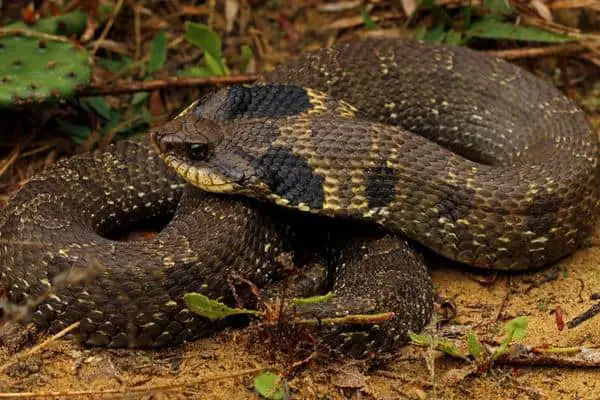
Scientific Name: Heterodon platirhinos
Also known as the spreading address, the Eastern Hognose snake can be brown, red, green, orange, black, or gray, depending on its locality. Some snakes even have a combination of all these colors on their bodies with blotches.
These snakes are non-venomous to humans but mildly venomous to their prey. They grow up to 28 inches with a conspicuous upside-down snout. They often reside in fields, woodlands, and coastal areas with loose sandy soil. They like burrowing into the ground to hunt for their prey, which includes toads, frogs, and small mammals.
The female Eastern Hognose Snake lays anywhere from 10 to 30 eggs in early to mid-summer. The young hatchlings are about eight inches long and have a bright green tail tip. As they mature, their tail tips darken and eventually turn black.
When threatened, the eastern hognose snake raises its head, flattens its neck, and hisses from the ground like a cobra. This helps deter its predators and makes it seem more dangerous than it actually is. Despite this, the eastern hognose snake is not a threat to humans, and it rarely bites. It can also be kept as a pet.
5. Rat Snake
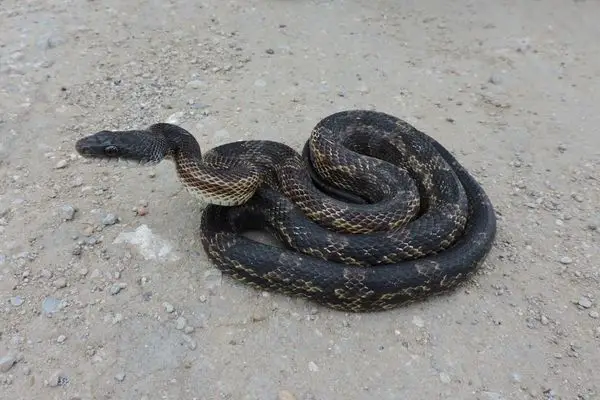
Scientific name: Pantherophis obsoletus
Rat snakes are common large snakes found in North Carolina. They have many different color patterns, depending on where they live. For example, rat snakes that live on coastal plains may be piedmont to greenish-yellow in color with dark brown stripes, while those that live in the mountains are solid black in color.
Young rat snakes have dark brown blotches on a gray or light brown background. As they age, the blotched pattern changes to the adult color pattern. Rat snakes’ bellies usually have white and black checkered markings and are relatively heavy-bodied. Their bodies are not round but rather shaped like a loaf of bread.
They are good climbers and can often be found around human dwellings. They do well in well-established neighborhoods, nesting in basements, attics, and even unused chimneys. Their diet consists of rodents, birds, and eggs. Because they often feed on chicken eggs, they are also known as “chicken snakes.”
Rat snakes typically mate in the spring, and the female lays anywhere from 6–28 eggs in mid-summer. The young hatchlings are about eight inches long and have a green tail tip. As they mature, their
While they are quite docile, they may bite and release foul-smelling musk if they feel threatened.
